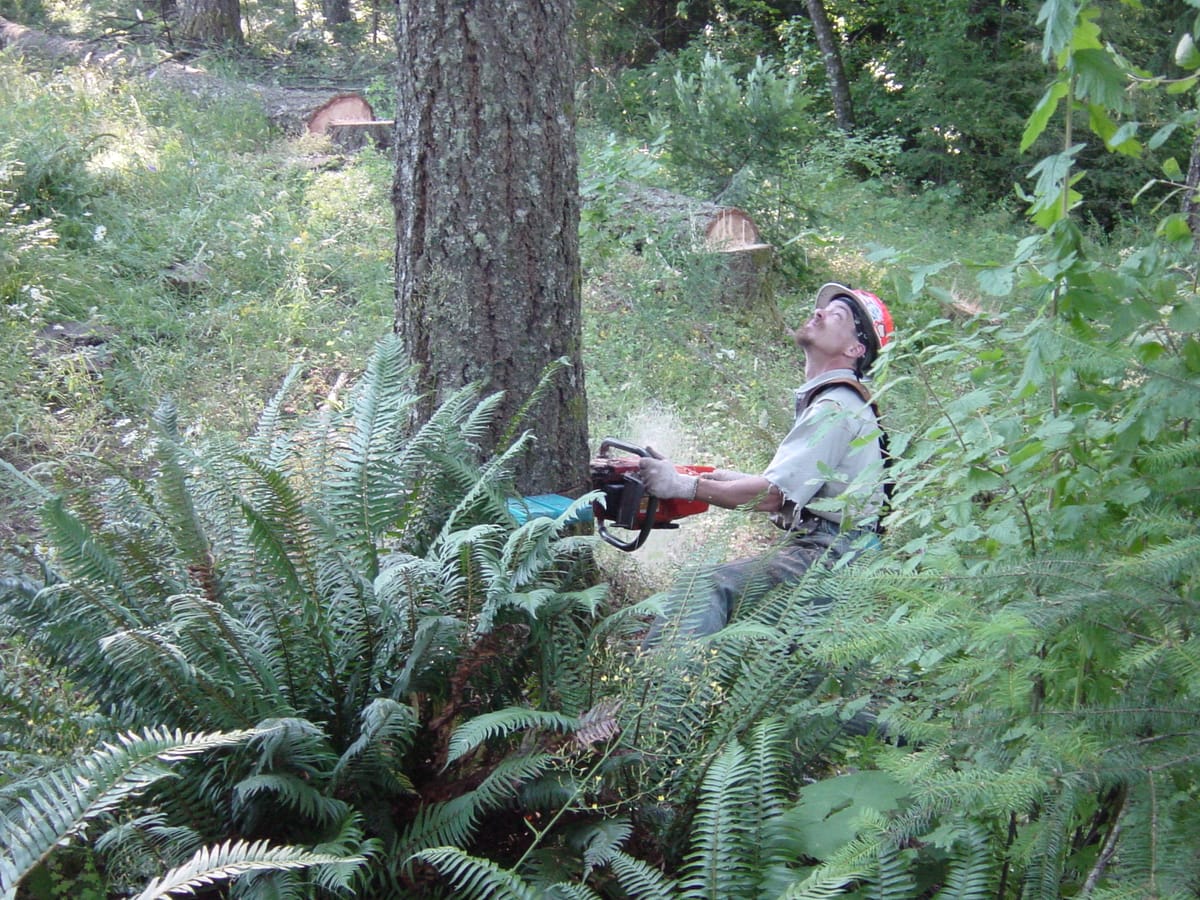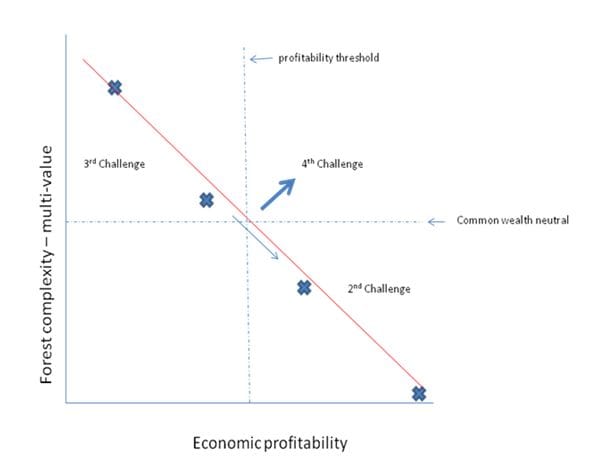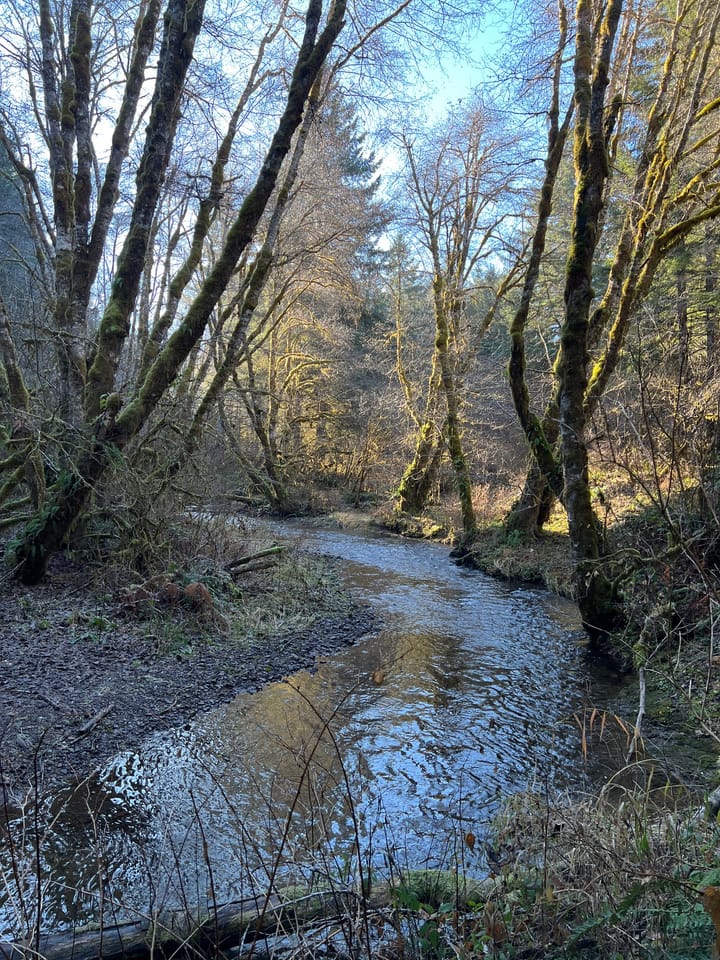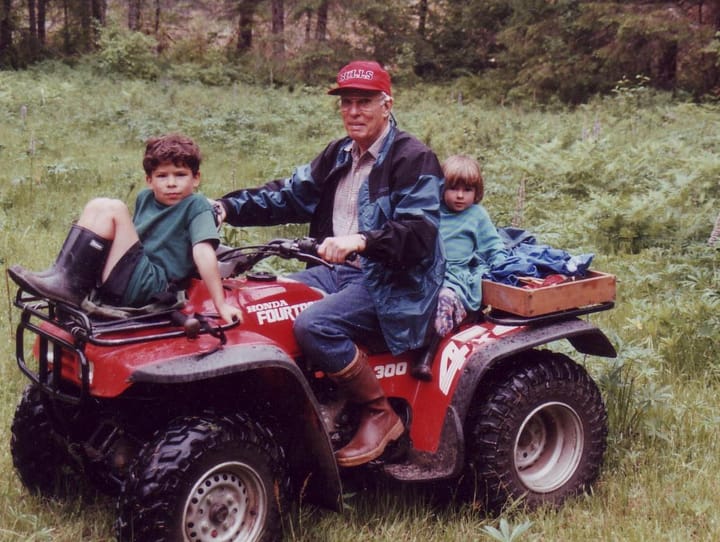Answering the Call - The Fourth Challenge

Making the case for improved approaches to forestry
Here in Oregon we have no excuse not to provide leadership in understanding and demonstrating excellent forestry; we have all of the ingredients – an ecological legacy of remarkably valuable and vibrant forests, a conducive climate, and a culture with enough comfort to allow for farsightedness. But we’re not doing it. Too often and in too many ways progress is blocked by crippling struggle and avoidable gridlock. Why is this? What holds us back? A challenge and opportunity calls for our acknowledgement and attention; in most ways we are ignoring it. It’s time to answer the call.
Through time, as Oregon’s culture and forests have co-evolved with one another, we’ve faced and wrestled with a sequence of challenges. Now a fourth challenge calls for – demands - our attention. The degree to which we acknowledge and meet this challenge will powerfully influence the future of both the people and the forests. Understanding the fourth challenge depends on first exploring the prior three. Oregon is a welcomely diverse place and we should make clear that different groups have highlighted the importance of each of the three challenges and mustered the resources needed to meet them – at the same time that others worked to block their way. I believe that there is reason to hope that all parties could see value in and benefit from acknowledging and working to meet the fourth challenge. Will we answer the call?
Challenge #1 – On their arrival in the Pacific Northwest, Euro-Americans stood in awe of many facets of the landscape, but none more than the size and majesty of the forests. Though today we recognize that these forests provided humans with many things they needed – water, food, medicines… - the use that first captivated the newcomers was converting the trees to lumber, connecting the product with markets, and converting trees into money. Working with rudimentary technologies, sketchily thin and often unreliable work forces, scarce capital and long, challenging hauls to markets all presented major challenges. Step by step, subchallenges were faced and met – falling the trees, moving the logs, milling them into lumber, finding buyers, and delivering the product – much driven only by the power of oatmeal and wood-fired steam. Today, when I spot telltale springboard notches in ten foot wide cedar stumps or rotting railroad trestles in a backwoods canyon , I am struck by how effective the systems were at removing so much of the old forest. Fortunes were made. Land was left with the uncertainty of what would follow. The challenge of converting old forest to money, while also answering the demands of a wood hungry world, had been met.
Challenge #2 – The cut over land presented a problem and offered an opportunity. Demand for wood continued to grow; how would it be met, if not from old growth? With society valuing many of the elements that forests provide, but pricing only one – lumber, the second challenge became clear. “How will we figure out how to grow as much wood as possible, as quickly as possible, and as cheaply as possible?”. Capital, entrepreneurial spirit, technologies, available workers, academic research, markets, and PR savvy came together to develop systems that led the world in meeting the second challenge. In the same way that the success in meeting the first challenge can be read in the old, huge stumps spread across the land and beautiful wood gracing so many old buildings, the second challenge success is reflected in the financially profitable sea of monocultural plantations, freight car loads of cheap lumber headed out of the region, and the large, powerful corporations that the model made possible.
Challenge #3 – While many in the region worked hard and took pride in successfully meeting the first two challenges, others were troubled, dismayed and motivated by the consequences – a forest type that was unique and valuable was largely removed from much of its range and totally gone in many areas. In the same way that time, money, effort, ingenuity, and political and PR savvy were critically invested in meeting the first two challenges, the same types of resources were brought to bear in meeting the third challenge – protecting the last of the old forest before it was too late. Battles were fought, lost and won; legislation was drafted, debated, and sometimes passed. As with the prior two challenges, the results are visible across this land today in the form of areas of old forest protected from logging through the Wilderness Act and other protection strategies. Though some look on the work as never done and always impermanent, much of what could be done has been done.
The consequences of facing these three challenges have been many, but three stand out:
1) Binary Landscape - In many cases we are left with a binary landscape of either monocultural, even aged, tree farm plantations growing where diverse, older forests once stood, or protected forests.
2) Binary Thinking - Many landowners and fellow citizens operating with a narrowed mindset of what constitutes a forest - plantation or wilderness.
3) Protection of Turf - Citizens, businesses, and organizations are strongly focused on protecting and defending the progress they feel they made through confronting and meeting one of the challenges. This makes it difficult for them to attend to the current and longer term needs and opportunities of local forests and forest-dependent communities. Examples include industry groups working hard to justify and defend the agricultural-based systems for the growing of tree crops, and conservation groups often myopically defending the ground they have made in protecting reserve forests.
These circumstances may be best presented graphically.
The graph below conceptually plots differences between Oregon forests based on two variables. The relative level of ecological complexity is measured on the Y axis, while the short term economic profitability is plotted on the X axis. Because there are aspects of all forests in the United States which no one can own and we all share in common, we will add a horizontal dashed line to represent the boundary between those forests that maintain and/or restore those commonwealth values (biodiversity, water......) and those that don't. Because forests range from those that generate the most short term profit to those that require financial investment to perpetuate, a vertical dashed line marks the line between forests that are financially viable and those that are not. In my experience, the forests fall along the general plot line marked, ranging from the most complex wilderness forests in the upper left to the most intensive plantations in the lower right.

In the course of my lifetime, market forces have caused the Xs on the graph to move toward the lower right. This dynamic leaves us with an unstable situation and two significant problems. The first is that the profitability of many forests comes at the expense of continuing degradation of the common wealth traits of forests. The continuing bleeding of natural capital is a form of subsidy that unfairly short changes current and future generations. The second problem is that forest owners, public and private, are left with two choices, neither of which are acceptable to many of us; either we treat the forests well but are not able to be sufficiently profitable, or we operate in ways where sufficient profits come at the expense of treating the land responsibly. Win-lose or lose-win.
The Fourth Challenge – The obvious solution is to move beyond this “either-or” thinking to imagine, create, and support new models of forestry and related markets that are both sufficiently profitable and maintain or restore the forests’ common wealth values. While it is important to maintain preserved forests, we are challenged to create and incentivize forests whose X moves into the upper right quadrant. Forests that satisfy Leopold’s definition of conservation – where both land and people benefit. Success in meeting this new challenge requires us to convince others that this can and must be done and to work together to do it. Progress depends on both recognizing and learning from those who are already striving to meet this challenge and forthrightly identifying and removing the barriers.
Throughout the state, region and world we see examples of forests owners and decision makers working to grow forests that are both ecologically functional and sufficiently profitable. Though none is perfect, we can learn from each. Examples include: the US Forest Service’s experimentation within the framework of the NW Forest Plan, experimentation in many tribal forests, particularly the Coquille Tribe, efforts by the State of Oregon to implement structure based management on state forests, as well as experimentation by a variety of private and non profit forest owners.
While this experimentation is encouraging, the impediments to acknowledging and meeting the fourth challenge are many and significant. They include:
1. Fixation on Past Challenges - Groups that are deeply invested in protecting and maintaining gains that they feel they made in meeting the second and third challenges (plantations and preserves) find it difficult or impossible to look beyond their short term, individual interests to recognize and help meet the newest challenge. Focus on tasks like resisting upgrades to the Forest Practices Act or working to have no more trees cut, limits the ability of many to recognize and help meet new challenges.
2. Lack of Clarity - Strong disagreement about whether forest owners – public or private – have a responsibility to maintain and/or restore common wealth values, creates an environment where the continuing loss of natural capital is not only tolerated but is often celebrated.
3. Return Expectations – Structural and historic factors cause many to expect and demand financial returns from forest ownership that are unrealistically higher than what the forests can provide, while maintaining their productive capacity and fulfilling common wealth responsibilities. Strong economic and political force is invested in maintaining conditions that support efforts to achieve these unrealistically high returns.
4. Denial and Resistance – Political, economic, and cultural forces are intertwined to maintain support for plantation management and deny the need for innovation and new models.
Evidence of the impact of these impediments may be seen in the recent decision by the Board of Forestry to replace their innovative structure based management model with “either-or”, preserve or plantation management approaches, in the proposed federal legislation to manage BLM O and C lands in similar ways, the choice to sell the Elliot State Forests because returns fell short of unreasonably high expectations, and the politically imbedded pressure of the Tree Farm system. The upshot of these pressures is that while there is a determined core of leaders working hard to answer the call of meeting the fourth challenge, a much larger percentage of Oregonians are either blind to the challenge and opportunity or working hard to deny responsibility to acknowledge and meet it.
In these pages we have explored the evolving relationships between people and forests, but also something much larger and universal – the co evolution and adaptation of a culture, economy and political context to compatibly and harmoniously live within the limits of what landscapes and ecosystems can provide. Circumstances call on us to evolve from frontier pioneer’s whose prosperity too often comes at the expense of land health into settled citizens whose measures of success are expanded to include the long term health and vitality of the land. Though our focus has been on people and forests in Oregon, they are representative of the larger challenges our species faces in learning to live within the limits of what this remarkable planet can provide.


